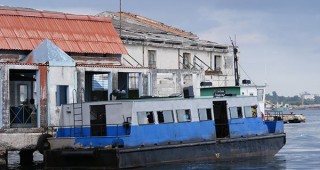
Instituto de Segunda Enseñanza de La Habana LH  2
2
The Institute of Secondary Education of Havana was founded in 1863 and originally located on Calle Obispo. It was later moved to this site in 1924 as part of the construction program for the area in t …
 EclecticAdmission: n-aZulueta e/ San José y Teniente Rey, Habana Vieja
EclecticAdmission: n-aZulueta e/ San José y Teniente Rey, Habana Vieja 
Fuente de las Américas LH  2
2
The Fuente de Las Américas, built as a tribute to the discoverer of the Americas, was inaugurated in 1924 as part of the construction of Avenida de las Américas, now known as 5ta Avenida. Made in whit …

Hotel Telégrafo LH  2+
2+
Initially located on Amistad Street and relocated in 1899 to its present site, the Telégrafo Hotel was rebuilt in 1911 and was considered then one of the most modern hotels in Havana. In 2001 it was r …
 $48 - $69ROOMS: 63Prado No. 408 esquina a Neptuno
$48 - $69ROOMS: 63Prado No. 408 esquina a Neptuno 
Edificio del Seguro Médico LH  2
2
This is one of the most significant exponents of the trends in architecture in Havana of its time. According to architect Pedro Martínez Inclán, “Quintana can boast about having given Havana…two build …
 Modern23 esquina a N
Modern23 esquina a N 
Estación Central de Ferrocarriles LH  1
1
The building of the railway station, expression of the Spanish plateresque style, was built in 1912 on the site of the former Armory. It has four floors with 77 windows and the main entrance is rounde …
 EclecticAdmission: FreeEgido esq. a Arsenal, Habana Vieja
EclecticAdmission: FreeEgido esq. a Arsenal, Habana Vieja 
Memorial a Julio Antonio Mella LH  1
1
Across from the Universidad de La Habana is this memorial, often used to make concerts and for political or student rallies. It holds the ashes of Julio Antonio Mella, a young student leader and found …

Compañía Cubana de Electricidad LH  1
1
Made with reinforced concrete and constructed entirely as an office building, it now houses the Ministerio de la Industria Básica (Ministry of Basic Industry). Rich materials such as marble, granite, …
 ModernCarlos III (Avenida Salvador Allende) #606 entre Oquendo y Soledad
ModernCarlos III (Avenida Salvador Allende) #606 entre Oquendo y Soledad 
Muelle de Luz-Ferry a Regla LH  1
1
This tiny ferry dock takes its name from Calle Luz, a nearby street. Somewhat battered passenger ferries shuttle across the bay to and from Regla and Casablanca, every 10-15 minutes or so.

Unión Árabe de Cuba LH  1
1
This is the venue of the Unión Árabe de Cuba, which represents around 50,000 Arab descendants from all over the country. It has a small art gallery which features Arab-influenced art and ceramics.

Solimar Building LH  1
1
An interesting and typical example of the Streamline movement which preferred rounded corners and a sensation of motion can be seen in this building built in 1944. The recovery of simple forms and the …
 Art DecoSoledad esquina a San Lázaro
Art DecoSoledad esquina a San Lázaro 


